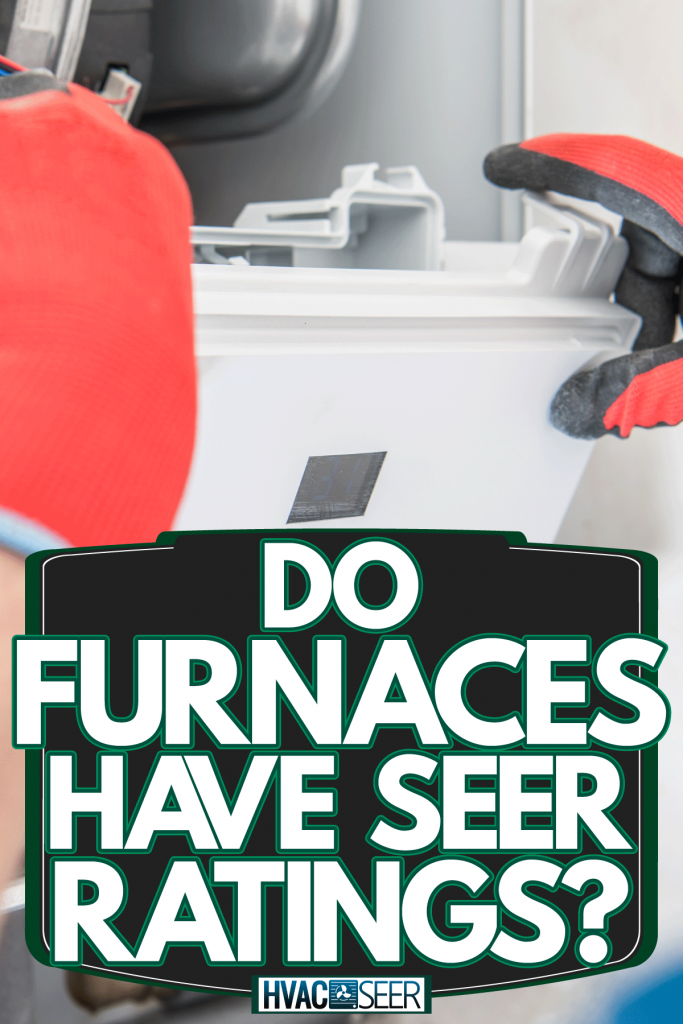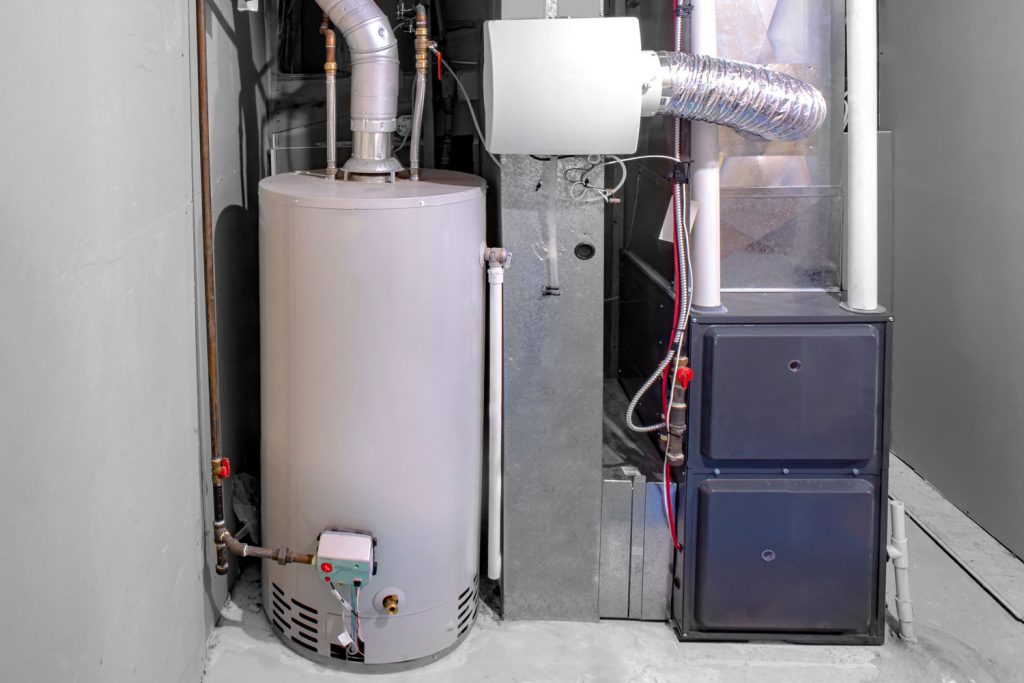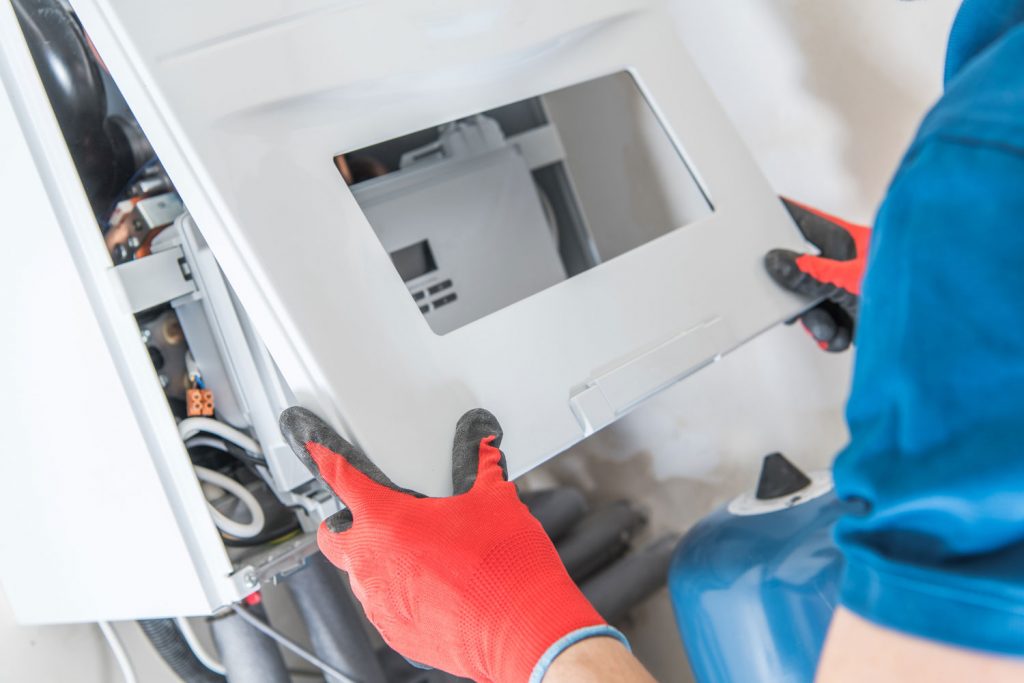SEER is a coefficient that allows homeowners to check if the appliances connected to their heating, ventilation, and air conditioning (HVAC) systems are economical. But do furnaces have SEER ratings? If so, where can you find these numbers? We researched for your convenience, and here’s what we found.
Furnaces can use SEER ratings to help users identify and measure their energy efficiency coefficients. But these heating systems, particularly gas models, use the AFUE measurement. These measurements are usually at the side of the heating unit or on the manufacturer’s website.
Homeowners can check certified online databases to verify their HVAC systems’ SEER ratings. Manual calculation is also an option if these measurements aren’t readily visible. Keep reading to learn how to calculate an HVAC unit’s SEER coefficient. We’ll also talk about where to look for your furnace’s SEER rating in greater detail.

What is SEER Vs. AFUE Rating?
The US Department of Energy (DOE) uses SEER and AFUE coefficients to establish standard ratings for the efficacy of HVAC systems. Although SEER and AFUE ratings might be on units like furnaces and heat pumps, both measurements provide different pieces of information. These details are:
Seasonal Energy Efficiency Ratio (SEER)
Certified and registered air conditioners and heat pumps use the SEER rating to provide estimates on cooling efficiency. Furnaces rarely have this feature, which means that SEER constants found on these heating systems are often for their connected HVAC framework.
Average Fuel Utilization Efficiency (AFUE)
AFUE rating computes for the heating efficiencies of gas and oil furnaces. Efficient home heating systems should use as little fuel as possible to provide houses with relatively inexpensive yet comfortable warmth in their abodes.
What Is More Important: SEER or EER?
Both the SEER rating and the energy efficiency ratio (EER) are important, especially for air conditioners. But you’ll most likely see SEER listed for central air-conditioning units, whereas EER constants are for room air conditioners.
Where Is The SEER Rating Found On A Furnace?

Gas and oil furnaces don’t usually have SEER ratings as they generally use AFUE to measure their energy efficiencies. Still, you might find the SEER rating on a sticker or tag found at the exterior casing or shell of a specific unit.
Another way to find out is to use AHRI’s product lookup tool, wherein you need to input your furnace’s brand and model number to find its SEER rating. If the search results produce zero results, your furnace might not be registered with AHRI. At this point, you may need to calculate your heating system’s SEER rating manually.
How to Calculate SEER Rating?
To calculate the SEER rating, the first element to verify is your unit’s British Thermal Unit (BTU), which is the heat content found in specific systems and energy sources. One (1) BTU is roughly equivalent to the heat energy released by lighting one match. You also need to identify the appliance’s BTU per hour.
These figures might be on the system’s online description or its user manual. Consult the unit’s manufacturer if you can’t find these details.
Once you acquire those ratings, use the following formula to compute for the SEER rating of your unit:
- (BTU per hour x 1,000) / (Watts used by the system per hour x 1,000)
You can also watch the video below for an alternate way of solving for an HVAC system’s SEER rating:
What Is A Good SEER Rating For A Furnace?

Property owners should know that a high SEER number doesn't equate to optimal energy efficiency. Still, the DOE requires a baseline of 12 SEER for cold- and heat-providing systems.
Moreover, this standard may increase depending on your region. For example, homes in the southeast and southwest areas of the country need to have at 14 SEER for their HVAC systems. Plus, the SEER rating often differs based on the system’s features. For instance, a space-constrained heat pump will have a lower SEER requirement than split-system variants.
Homeowners should also expect a rise in the DOE’s SEER rating standards from 2023. From this year, the organization requires property owners to use air-sourced heat pumps with a minimum SEER rating of 14 for homes in the northern areas and 15 SEER for those in the south.
After identifying the baseline SEER rating of your location, think about contacting your HVAC solutions provider to help in identifying a good seasonal energy efficiency number for your furnace. It’s because each household can have dissimilar heating requirements. One home might find that 20 SEER is sufficient, but another household may need 26 SEER.
What Is The Lowest Efficiency Furnace Allowed By Law?
According to the National Appliance Energy Conservation Act of 1987, it calls for all new furnaces have an AFUE rating of at least 78%. The baseline has increased since then, which demands a minimum of 80% AFUE coefficient for new furnaces.
Additionally, furnaces offering 90% efficiency are classified as high-efficiency models. However, some states require a 90% AFUE rating on their new gas heating systems. These locations are in the northern region of the nation, which include (but are not limited to) Washington, Utah, and Illinois. On the other hand, the standard rating for oil furnaces in all states is 83%.
What SEER Qualifies For Energy Tax Credit?
At the time of writing, the federal government extended its $300 tax credit from January 15, 2021, to December 31, 2021. Homeowners can avail of this incentive by meeting the minimum energy efficiency ratio (EER) and SEER on their air conditioner and heat pumps. The baseline for specific units are:
Air Conditioners
- Split systems: SEER greater than or equal to 16, and an EER of greater than or equal to 13.
- Packaged systems: SEER greater than or equal to 14, and an EER of greater than or equal to 12.
Heat Pumps
- Split systems: At least 8.5 Heating Seasonal Performance Factor (HSPF), a SEER greater than 12.5, and an EER of greater than 14.
- Packaged systems: At least 8 HSPF, a SEER greater than 12, and an EER of greater than 14.
HVAC system owners may also search for the ‘ENERGY STAR Most Efficient’ or ‘ENERGY STAR certified’ label on their units to qualify for the tax credit. Moreover, property owners can only register their primary residences to take advantage of this monetary incentive. Vacation homes, second lots, and commercial properties are prohibited from using this bonus.
Does SEER Save Money?
A high-efficiency HVAC unit will often yield extra savings for homeowners. Efficient cooling and heating systems usually don't require pulling a significant amount of power to work as intended. Homeowners can use online calculators to help them identify their average savings when using their HVAC systems.
A good practice is to estimate your savings is to input the BTU while altering the SEER rating. For example, you're using a 20,000 BTU furnace; if so, here's a short list of the average monthly costs you may encounter when using that heating unit:
- 12 SEER = $18.32
- 14 SEER = $15.70
- 16 SEER = $13.74
- 18 SEER = $12.21
- 20 SEER = $10.99
Take note that the calculations above use electricity costs of $0.18 per hour. Therefore, if you’re using the 20 SEER option, you can save about $50 per year in energy costs. Additionally, if you choose a 14 SEER model over a 12 SEER unit, you may save about $35 for using the more energy-efficient variant.
Check out this high-efficiency furnace on Amazon.
How Much Does A New Gas Furnace Cost?

The average costs for new standard-efficiency gas furnaces range from $500 to $1,500. Opting for a moderate-efficiency unit with 90% to 95% AFUE ratings raises the fees to between $1,000 and $3,000. Then, expect to pay approximately $2,000 to $6,000 for purchasing high-efficiency heating systems with over 96% or over AFUE constants.
Prices may also depend on the brand of the heating unit. Some examples for the costs of furnaces from certain brands are:
- Goodman: $2,500 to $5,500
- American Standard: $2,000 to $8,000
- Payne: $1,750 to $5,000
- Coleman: $2,000 to $6,000
Buying a new furnace may also include installation using professional services. If so, the expert assistance may require $50 to $150 per hour for each worker involved in the project. So if a furnace installation lasts about 4 hours, expect to spend about $200 to $600 for the job for each technician.
Final Words
Furnaces generally use AFUE ratings more than SEER coefficients. AFUE is the fuel energy to heat a home expressed in percentage. On the other hand, air conditioner manufacturers often use SEER ratings to measure cooling efficacies.
Homeowners may even take advantage of a special energy tax credit from the federal government if certain parts of their HVAC systems meet certain standards.
For more furnace guides, read these posts:
How To Convert An Oil Furnace To Gas Or Propane—And Should You?

